8 Natural Remedies to Get Rid of White Tongue
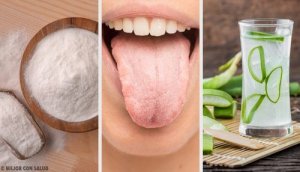

Written and verified by the doctor Karla Henríquez
Do you want to get rid of your white tongue so that it looks pink again when you take a selfie? Then pay attention to the remedies and data we’re going to share with you below.
A healthy tongue is pink and its surface is covered with small nodules or papillae. However, sometimes, a white coating forms on the tongue. In these cases, it’s possible that this occurs as a result of some diseases, such as lupus, syphilis, jaundice, and oral candidiasis.
So, if your doctor already cleared you out from having these conditions, then having a whitish tongue isn’t a serious problem and is only temporary. In any case, you can make it go away by implementing certain hygiene measures and other tricks.
Those who don’t maintain good oral hygiene can have a white tongue. Therefore, it’s essential to correctly clean both your teeth and rest of your mouth.
In addition to affecting your aesthetics, a white tongue can alter the taste of your meals and lead to bad breath and lead to other conditions.
What can cause white tongue?
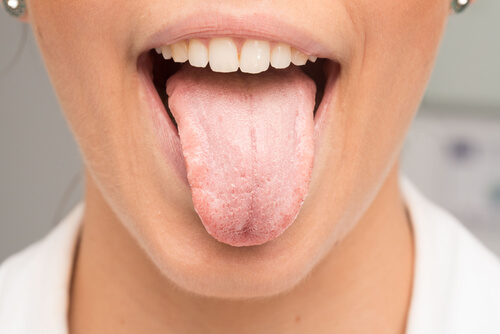
Apart from the aforementioned diseases, other causes could be behind this whitish coloring:
- Fever.
- Bacteria.
- Dead cells.
- Food particles.
- Taking antibiotics or medications.
- Inflamed taste buds caused by dehydration.
- Excessive consumption of alcohol, tobacco, acidic foods, and foods with a lot of refined sugar.
Discover: 9 Things Your Tongue Is Trying to Tell You About Your Health
How to avoid a white tongue
According to popular belief, the best solution for tongue whiteness is a balanced diet that will clean the body and boost your defenses.
- Drink plenty of water, at least four glasses per day.
- Stay away from commercial sugary drinks and soft drinks.
- Eat sugar-free plain yogurt once a day.
- Also, eat raw vegetables (spinach, tomatoes, lettuce, peppers, and onions).
- Eat fruits every day, and not just those that are rich in vitamin C (oranges, tangerines, kiwi, strawberries, or pineapple).
Note: If the problem doesn’t go away with these good habits, go see your doctor.
Natural remedies to get rid of white tongue
Although they aren’t scientifically proven, the following remedies can help get rid of white tongue. You can try them out, but do so with caution.
1. Sea salt
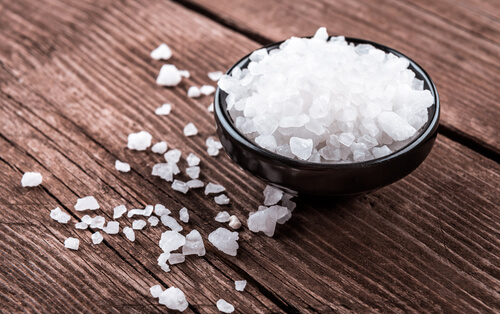
Salt is one of the best home remedies for treating a white tongue. It functions as a natural scraper for the tongue that can help eliminate dead cells and any accumulated dirt particles. You can also do gargles mixing it with a glass of warm water, as follows:
What should you do?
- Firstly, sprinkle a little salt on your tongue.
- Gently brush your tongue for a minute with the help of a toothbrush.
- Rinse with warm water.
- Finally, repeat this process two times a day.
You might like: Five Remedies to Soothe a Scratchy Throat Fast
2. Turmeric
Another of the home remedies that can help you get rid of white tongue is the following mixture with turmeric, that famous spice that, according to data from some recent studies, has anti-inflammatory and antibacterial properties.
Ingredients
- 1 teaspoon of turmeric (5 g).
- The juice of one lemon.
What should you do?
- Mix the turmeric with the lemon juice until you make a paste.
- Brush your tongue with the paste and let it act for two to three minutes.
- After this time, rinse your mouth with warm water.
- Repeat this procedure once a day for three to five days.
Another option is to gargle. To do this, you’ll need: ½ teaspoon of turmeric (3 g) and 1 glass of water (200 ml). Mix both ingredients and gargle twice a day.
3. Plain yogurt
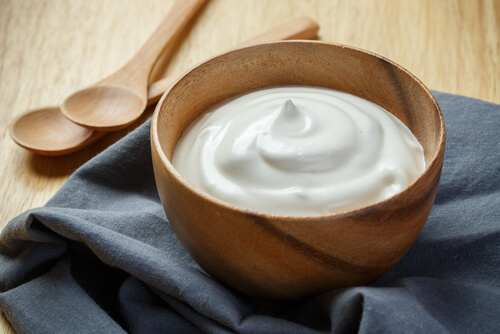
This is another effective product for treating tongue whiteness. Yogurt contains probiotics that eliminate fungi that, on occasion, are the reason for this condition.
All you have to do is eat a small yogurt (125 ml) a day. This way, you won’t just improve the health of your tongue but you’ll obtain intestinal health benefits as well.
4. Baking soda
Although this is a highly recommended remedy in the popular sphere, chemists, such as Deborah García Bello, advise against it. This is because baking soda is an abrasive substance that can easily burn the skin and mucous membranes.
Ingredients
- 1 teaspoon of baking soda (5 g).
- Water (the necessary amount).
What should you do?
- Mix the baking soda with the water until you get a paste.
- Rinse your mouth with this mixture for a few seconds once a week.
5. Garlic
All you have to do is chew a garlic clove every day. If it’s too strong for you. just add it to your meals.
6. Aloe vera juice
Aloe vera juice is another remedy that you can try to get rid of white tongue. You can buy it ready-made or make it at home with just a couple of ingredients.
Ingredients
- 2 tablespoons of aloe vera juice (20 ml).
- Water (the necessary amount).
What should you do?
- Do gargles for three minutes with a tablespoon of aloe vera juice.
- Then, spit it out.
- Finally, consume the other tablespoon of aloe vera juice.
Read: Top Five Aloe Vera Health Benefits
7. Vegetable glycerin
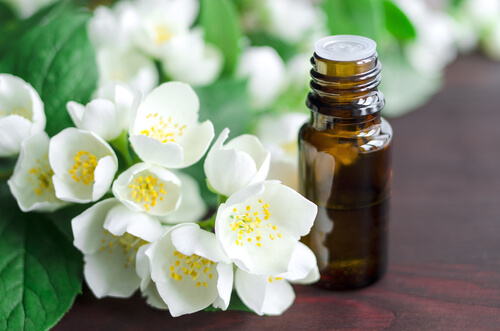
Vegetable glycerin is another natural remedy for the treatment of a white tongue, especially when it’s caused by dry mouth. It also helps with bad breath. You can find it at your local grocery store.
Ingredients
- 1/2 tablespoon of vegetable glycerin (3 ml).
What should you do?
- Put a little vegetable glycerin in your mouth and brush with it slowly.
- Rinse your mouth with warm water.
8. Coconut oil
This oil’s antibacterial properties will help you guard your oral hygiene.All you have to do is brush your tongue with a little bit of it in the morning and then wash your mouth as usual.
Additional advice for treating a white tongue
Other habits can help you get rid of white tongue. They’re very easy. Take note:
- Eat more fruit, without any added sugar.
- Drink plenty of water to keep your tongue clean. Doing so will get rid of extra food particles.
- Periodically gargle the food with warm water, especially after every meal in order to avoid the accumulation of food on your tongue and mouth.
- Finally, when you brush your teeth, always brush your tongue as well.
These are just some remedies for your white tongue. But if the problem persists, consult your doctor as soon as possible. Especially if the white tongue comes with pain and inflammation.
All cited sources were thoroughly reviewed by our team to ensure their quality, reliability, currency, and validity. The bibliography of this article was considered reliable and of academic or scientific accuracy.
- Adamczak, A., Ożarowski, M., & Karpiński, T. M. (2020). Curcumin, a natural antimicrobial agent with strain-specific activity. Pharmaceuticals, 13(7), 1-12. Disponible en: https://www.ncbi.nlm.nih.gov/pmc/articles/PMC7408453/
- Bakri, I. M. & Douglas, C. W. I. (2005). Inhibitory effect of garlic extract on oral bacteria. Archives of oral biology, 50(7), 645-651. Disponible en: https://pubmed.ncbi.nlm.nih.gov/15892950/
- Chandel, S., Khan, M. A., Singh, N., Agrawal, A. & Khare, V. (2017). The effect of sodium bicarbonate oral rinse on salivary pH and oral microflora: A prospective cohort study. National journal of maxillofacial surgery, 8(2), 106-109. Disponible en: https://www.ncbi.nlm.nih.gov/pmc/articles/PMC5773983/
- Chen, H., Li, Q., Li, M.. (2021). Microbial characteristics across different tongue coating types in a healthy population. Journal of oral microbiology, 13(1), 1-12. Disponible en: https://www.ncbi.nlm.nih.gov/pmc/articles/PMC8317956/
- Danser, M. M., Gómez, S. M., & Van der Weijden, G. A. (2003). Tongue coating and tongue brushing: a literature review. International journal of dental hygiene, 1(3), 151-158. Disponible en: https://onlinelibrary.wiley.com/doi/full/10.1034/j.1601-5037.2003.00034.x
- Quirynen, M., Avontroodt, P., Soers, C., Zhao, H., Pauwels, M., & Van Steenberghe, D. (2004). Impact of tongue cleansers on microbial load and taste. Journal of clinical periodontology, 31(7), 506-510. Disponible en: https://onlinelibrary.wiley.com/doi/abs/10.1111/j.0303-6979.2004.00507.x
- Madeswaran, S., & Jayachandran, S. (2018). Sodium bicarbonate: A review and its uses in dentistry. Indian Journal of Dental Research, 29(5), 672-677. Disponible en: https://pubmed.ncbi.nlm.nih.gov/30409952/
- Matsubara, V. H., Wang, Y., Bandara, H. M., et al. (2016). Probiotic lactobacilli inhibit early stages of Candida albicans biofilm development by reducing their growth, cell adhesion, and filamentation. Applied microbiology and biotechnology, 100(14), 6415-6426. Disponible en: https://pubmed.ncbi.nlm.nih.gov/27087525/
- Manju, M., Prathyusha, P., Joseph, E., et al. (2015). Evaluation of the effect of three supplementary oral hygiene measures on salivary mutans streptococci levels in children: A randomized comparative clinical trial. European Journal of Dentistry, 9(04), 462-469. Disponible en: https://www.ncbi.nlm.nih.gov/pmc/articles/PMC4745225/
- Nair, G. R., Naidu, G. S., Jain, S., et al. (2016). Clinical effectiveness of aloe vera in the management of oral mucosal diseases-a systematic review. Journal of clinical and diagnostic research: JCDR, 10(8), 1-7. Disponible en: https://www.ncbi.nlm.nih.gov/pmc/articles/PMC5028429/
- Nalawade, T. M., Bhat, K. & Sogi, S. H. (2015). Bactericidal activity of propylene glycol, glycerine, polyethylene glycol 400, and polyethylene glycol 1000 against selected microorganisms. Journal of international society of preventive & community dentistry, 5(2), 114-119. Disponible en: https://www.ncbi.nlm.nih.gov/pmc/articles/PMC4415329/
- Peedikayil, F. C., Remy, V., John, S., et al. (2016). Comparison of antibacterial efficacy of coconut oil and chlorhexidine on Streptococcus mutans: An in vivo study. Journal of International Society of Preventive & Community Dentistry, 6(5), 447-452. Disponible en: https://www.ncbi.nlm.nih.gov/pmc/articles/PMC5109859/
- Peng, Y., Ao, M., Dong, et al. (2021). Anti-inflammatory effects of curcumin in the inflammatory diseases: Status, limitations and countermeasures. Drug design, development and therapy, 15, 1-23. Disponible en: https://www.ncbi.nlm.nih.gov/pmc/articles/PMC8572027/#:~:text=In%20a%20clinical%20trial%20of,and%20oxidative%20stress%20%5B60%5D.
- Van Tornout, M., Dadamio, J., Coucke, W., & Quirynen, M. (2013). Tongue coating: related factors. Journal of clinical periodontology, 40(2), 180-185. Disponible en: https://onlinelibrary.wiley.com/doi/abs/10.1111/jcpe.12031
This text is provided for informational purposes only and does not replace consultation with a professional. If in doubt, consult your specialist.








